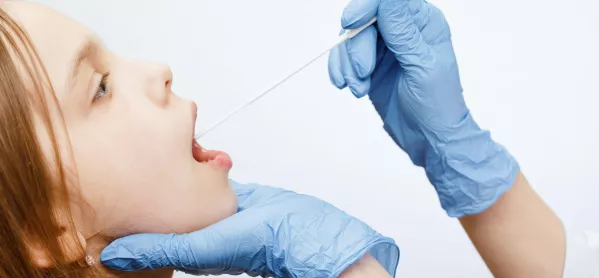Schools and colleges could be asked to operate on a two-week rota or to stay open only for vulnerable children and those of critical workers as part of new contingency plans for coping with spikes in Covid-19.
The Department for Education has published details tonight of plans it has made for the “worst-case scenario” of having to restrict pupils' access to school as a result of the coronavirus.
It is has developed a four-tier system for keeping education settings running in areas with local Covid-19 restrictions in place.
U-turn: Masks to be worn in high-risk secondary schools
WHO: Pupils aged 12 and over 'should wear masks'
DfE: Government has not ruled out rotas for schools in local Covid-19 spikes
The Association of School and College Leaders' general secretary Geoff Barton welcomed the plans as a step in the right direction but criticised the department for publishing them on a Friday night just before schools are set to return.
Labour’s shadow education secretary Kate Green tweeted the timing of the announcement was “insulting to heads and staff who’ve worked flat out over the summer holiday, and are now expected to cope with yet more new guidance just hours before the bank holiday weekend and only days before term starts".
The first tier sees schools and colleges remain open but with masks or face coverings required in corridors and communal areas for staff and all pupils older than Year 7.
This change to the guidance on wearing masks in schools was announced last week in a government U-turn.
Tier 2 will see schools being asked to use rotas to “break chains of transmission of the virus”.
The DfE said schools should ideally operate a rota system, with pupils spending two weeks on-site followed by two weeks learning remotely.
The government guidance also says that schools should “utilise time over the weekend effectively in order to prepare for a different rota group at the start of the week”.
Tiers 3 and 4 would mean schools and colleges only staying open for vulnerable children and children of critical workers while the remainder of pupils work through remote learning.
Education secretary Gavin Williamson said: “Our primary focus remains supporting all schools to welcome back all pupils for the start of term and we thank teachers and staff for their hard work in preparations.
“We hope that we won’t have to implement the guidance set out today because the local lockdown measures we have introduced so far are working. Changes to school attendance will only ever be an absolute last resort.
"However, it is important that both government and schools prepare for a worst-case scenario, so this framework represents the sensible contingency planning any responsible government would put in place.”
Mr Barton said: "We’ve been calling for more contingency planning from the government in the event of local lockdowns, so we are pleased that it has finally published some guidance to this effect.
“But to wait until the Friday night before most schools return isn’t the government’s finest moment.
"Obviously, schools haven’t had any chance whatsoever to incorporate this into their planning and will now have to revisit the plans they have put in place."
From this week, schools and colleges have begun receiving a pack of 10 Covid-19 testing kits. The DfE said more were available to be ordered if needed.
These home-testing kits "are to be used in exceptional circumstances, such as an individual with symptoms who may have barriers to accessing a test elsewhere.”
Schools and colleges are also receiving packs of PPE "to use in the very limited circumstances... such as when it is not possible for a staff member to maintain a 2-metre distance from a pupil with a suspected case of coronavirus."




